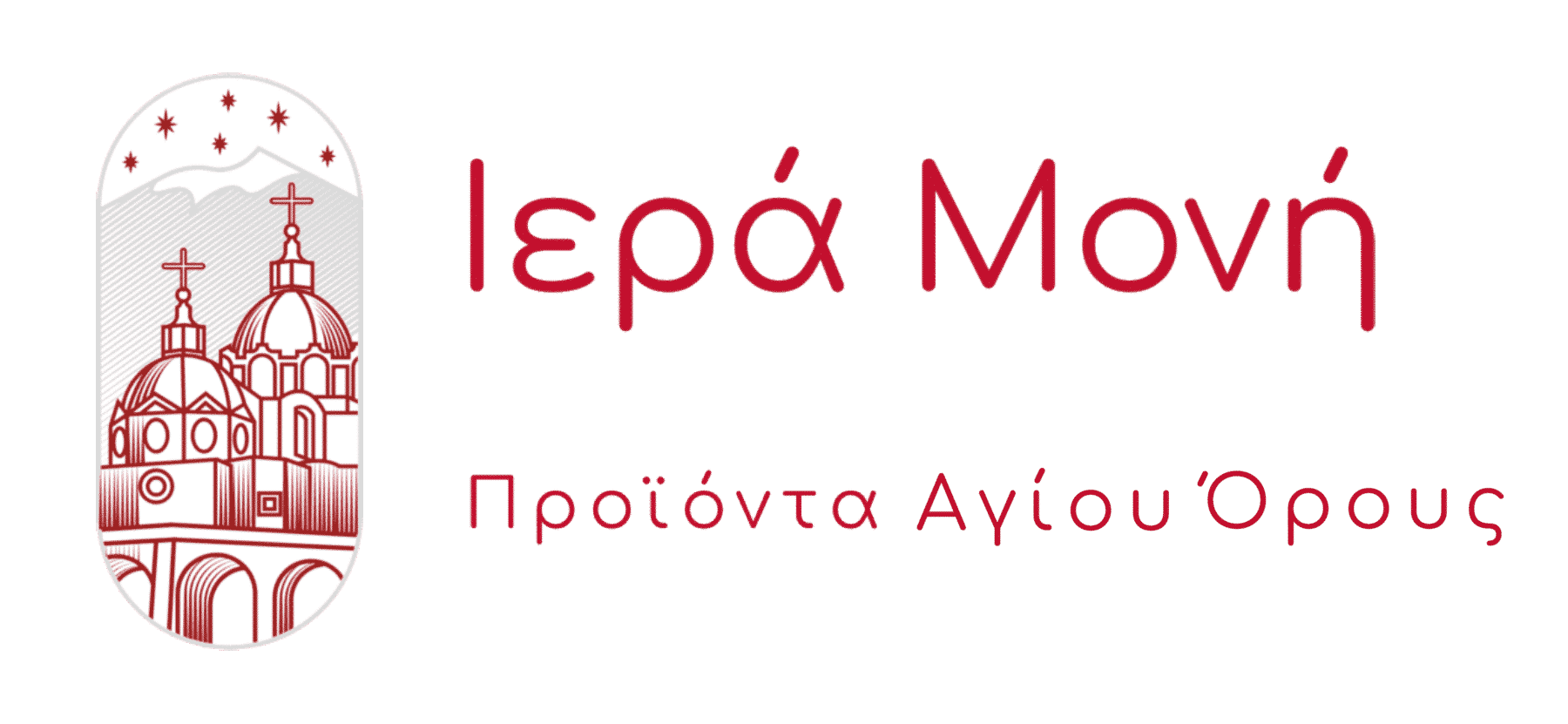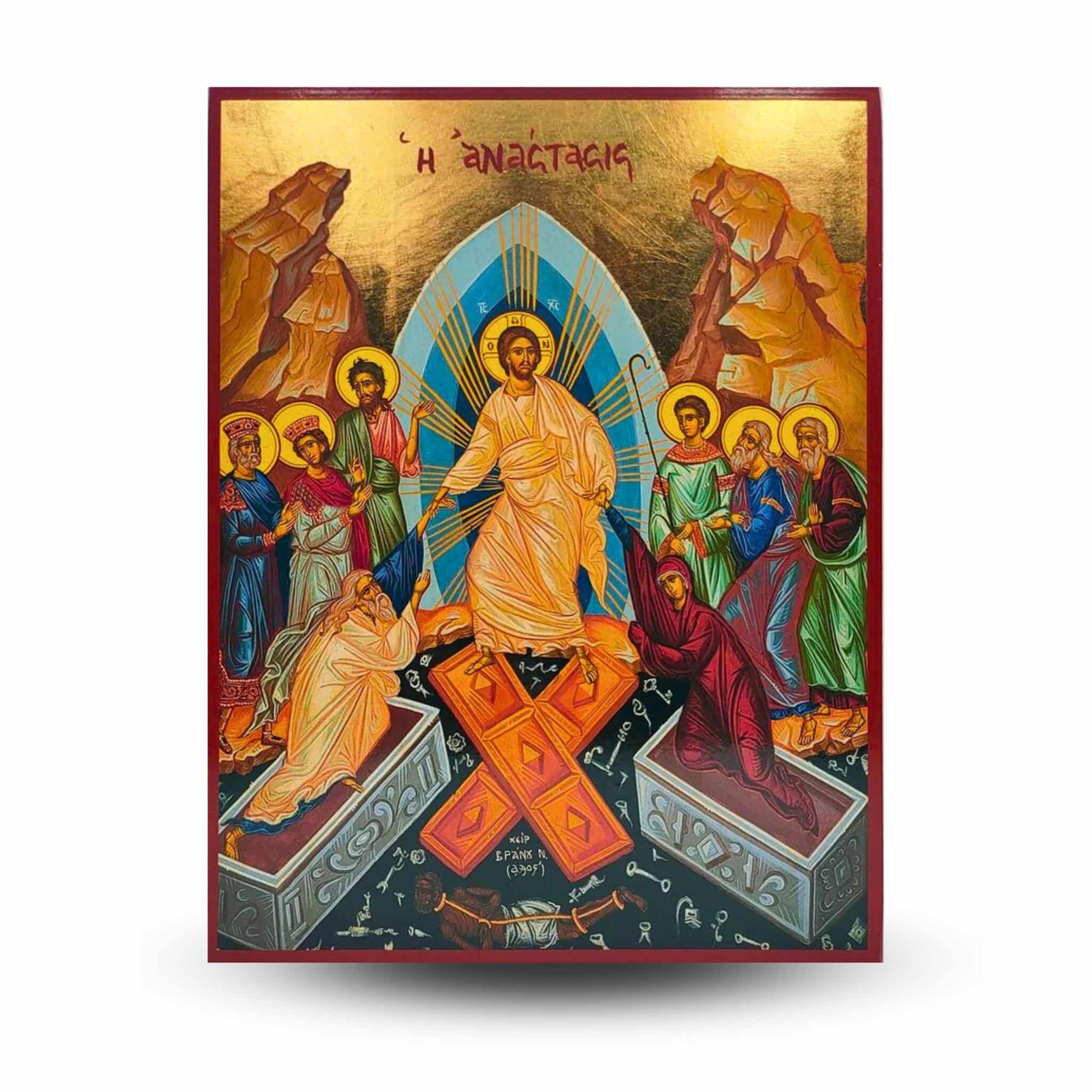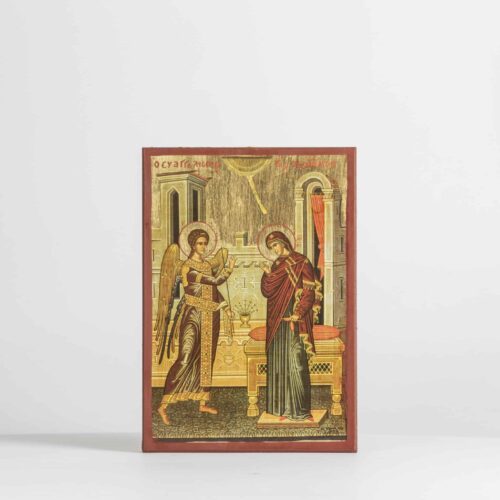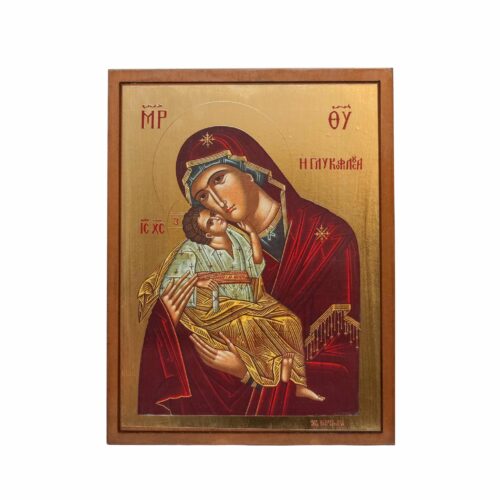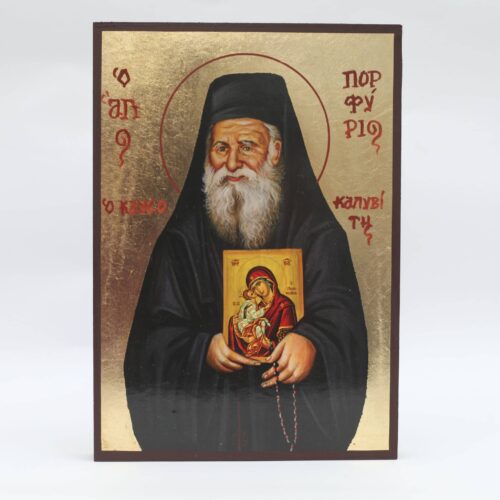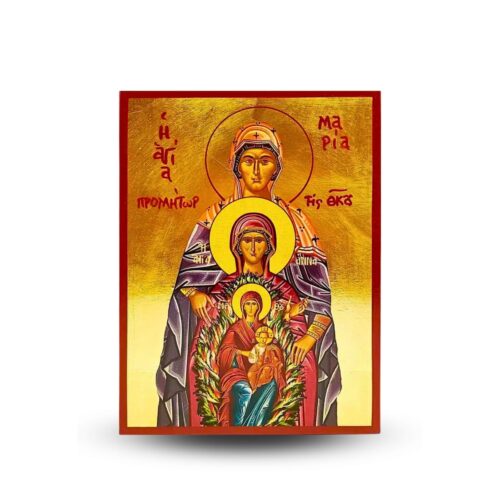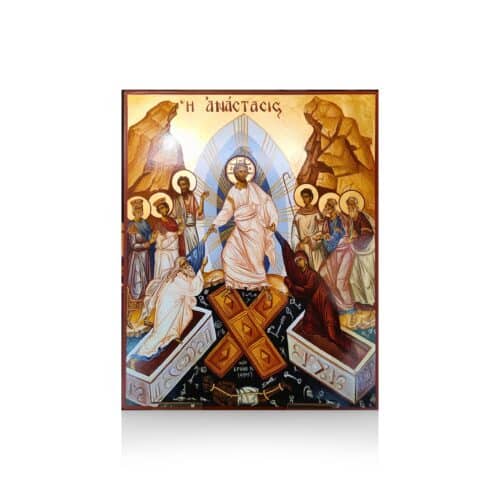Image of the Resurrection Wooden Gilded. In 2 sizes. The correct name of the image is The Descent of Christ into Hades. The icon is wooden, flat in a classic ecclesiastical design with a traditional red cadmium border. It is the most classic type of image due to its timeless design.
Image of the Resurrection Wooden Gilded
25,00 € - 100,00 €
Description
Image of the Resurrection Wooden Gilded. In 2 sizes. The correct name of the image is The Descent of Christ into Hades. The icon is wooden, flat in a classic ecclesiastical design with a traditional red cadmium border. It is the most classic type of image due to its timeless design. The use of MDF wood makes it unchanged over time, as its material is highly durable. It is specially processed with double varnish to have the maximum resistance to time and wear.
In Orthodoxy and throughout Christendom, according to hiss Fathers of our Church, the Resurrection of Christ is the greatest event in history and that is why it is called the "festival of festivals" and "festival of festivals".
The Resurrection of Christ marks the beginning of the new creation, of the new world that God offers to mankind.
And this new world has nothing to do with the smell of decay, the terror of death and the hostile manifestations of man to fellow man, but it is a life of love, warmth and hope.
The Resurrection of Christ is a message of hope and life.
This message with the preaching of the Church is addressed to man of every age and testifies to the inexhaustible love of God, who, despite the deadly energies of men, constantly invites them to life and to the world of the Resurrection. "
"Christ rose from the dead,
die death you tread
κand to them in the memorials
gifted life".
This small but magnificent and wondrous trope, sung by all believers without exception, for forty whole days, during which our Church celebrates the peak of the holidays, the Resurrection of Christ, sums up all the depth and richness of theology us.
So this trope is depicted in the image of the Resurrection, as it was accepted by the 'Orthodox' Eastern Church.
At the base of the image, a dark abyss opens between cliffs.
We can see the marble sarcophagi, the gates of hell with the scattered locks, nails and locks, as well as the figures of Satan and Hades.
Beneath the gates of Hades broken by Christ, an old man is depicted in a black chasm, disheveled or naked, chained and frightened, which is death or Satan.
In some later images, as the monk Dionysios informs us in the interpretation of the Painters, angels are told "to bind Beelzebub".
These are the "bottoms of the earth", the "treasures of Hell" where the Lord descended to proclaim salvation "for ever and ever".
Hades, then, is an imaginary space, metaphysical, yet tangible thanks to the realistic recollections of its symbols, symbols of decay and slavery that are annulled by the majestic divine presence.
Above the cave, in the center of the image, stands the victor of death, Christ thunder, with visible in His hands and feet the signs of the Crucifixion, shining from the uncreated light, Lord of Life, full of dynamism of the Holy Spirit and radiating divine energies.
The appearance of His face is stern but with a philanthropic expression, that is, in the image is seen His loving gaze for man.
It is obvious that His person reigns royally as a liberator and from His excessive love for man he reaches as far as Hades to meet him.
Christ descends into the (inner) Hell of every human being, enters into his despair to pull him out of this torturous torment of his despair, decay and loneliness and to make him commune with him.
The oval glory or luminous circle that surrounds Christ, shows His divinity.
His soul, although separated from death by His body, is still and is united with the divine being.
The impetus of the movement, the halo on His head, His golden robes that flutter - radiate and the triumphant look of His face are in complete harmony with the couplet of the Easter sequence:
"Christ descended to fight for hell alone, Lavon ascended many of the victory bitch (= booty)".
Christ, standing up, returns victorious from his battle with Hades holding the first spoils of victory. He is clothed with light, a feature of the glorified body and a symbol of divine Glory.
His garments are of a supernatural whiteness and refer to the colors of Tabor (= The Mount that became the Transfiguration of Christ),
elsewhere, in other images, this is yellow gold plated, and covered with gold, with golden rays.
Christ is in royal garb, he is the Lord, but his only power is the Crucified Love and the invincible power of the Cross.
With a strong movement of the hands (grasping the wrists) he grabs Adam and Eve, all agitated, agitated to lead them to the Exodus.
They feel anguish and satisfaction, because the time has come after so many centuries, the time of redemption from the bonds of Hades, where they were condemned for their downfall.
Adam, pretends to be an old man, his rich white long hair rests on his shoulders and his face is wild and hard.
His tunic is off-white with shades of violet and his robe is off-white with shades of green.
Eva is also presented as old, white-haired, wrapped in a off-white tunic and hidden, while the robe that covers her left hand, is in bright red.
Their bodies and hands are raised to Christ in a state of supplication.
The Resurrection of the protoplasts is performed by sarcophagi.
This means that Adam and Eve rise through sarcophagi projected to the right and left of Christ and, as we observe, are facing each other.
Thus the two Adam now coincide and are identified no longer in the emptiness of the Incarnation, but in the glory of the Presence. The one who said to Adam "where are you" went up to the Cross to ask for the one who was lost.
He descended to Hades saying: "Come, then, my own image and my likeness". That is why the groups on the left and the right represent the second plan, humanity.
They are the righteous and the prophets (Abel, Enoch, Isaiah, Jeremiah).
Behind Adam stands Saint John the Baptist, who blesses with his right hand while on the left he holds a wrapped dialect (linen cloth).
Saint John the Baptist was the one who again had prepared the way for the preaching of Christ in Hades, which is why his illustration is necessary.
He also expresses the gesture of a witness and identifies the Savior, he is also a forerunner in Hades. In addition, the kings of Israel, David and Solomon, stand behind Adam.
King David wears a crown, a red robe and a dark blue robe that covers his outstretched arms (in some images his neck is surrounded by a golden ribbon adorned with precious stones).
His body is facing the center, while his head is turned backwards as if talking to his son and successor on the throne of Solomon standing behind him.
Similar royal robes are worn by the prophet Solomon, in contrasting colors from those of his father, namely dark blue tunic and red robe.
In the plain of the show, behind the groups of the right on the right and the left, there are mountains
On the other side of the representation, behind Eve, follows Abel, the righteous one of the descendants of the protoplasts who offered a pleasing sacrifice to God.
He stretches out his hand to Christ, with his left hand holds the shepherd's staff and wears a short off-white tunic with rosy shades.
Then follow other righteous men of the Old Testament, who with them, bewildered and astonished, watch the triumphant entry of Christ the Redeemer into the world of Hades.
Everyone recognizes the Savior and expresses him with their gestures and attitudes. Christ does not come out of the grave but "from the dead", coming out of the exhausted Hades like a bridal palace…
Between the descent to Hades and the appearance of the risen Christ is placed a mystery surrounded by silence, perfectly accessible to the human eye.
We observe, then, that all this brilliance of their virtues is proved in the hagiography with their white and varied clothes, which have an intense and careful coloring, which befits the glorious event of the Resurrection common to all.
The Holy Spirit acts, eliminates the darkness of death, the fear of Judgment, the deep chasm of Hades.
Its light transforms the Easter night into a Symposium of Joy, a celebration of the Meeting.
resurrection image buy
what does the image of the resurrection symbolize
the descent into hell image
Resurrection hagiographies
Analysis of the image of the resurrection
resurrection of the Lord
The image of Christ's resurrection in Eastern and Western iconography
icon of the resurrection
depiction of the Resurrection in the east
Resurrection in the east and west
image of the Resurrection of Lazarus
The depiction of the Resurrection in
of the Resurrection in the Orthodox
Saint Anastasia Pharmacolytria
Resurrection of Christ Hades Descent
Anastasia Farmakolytria Agia
Pharmacist Saint Anastasia
image of the Resurrection
of the Resurrection The icon
Resurrection Her image
the image of the Resurrection
the resurrection
for an image of the resurrection
from the grave
Her image
More information
| Weight | 1 kg |
|---|---|
| Dimensions | 20x26x2 cm |
| Select Size | Medium 20X26 cm, Large 50X60 cm |
